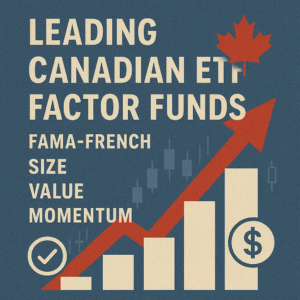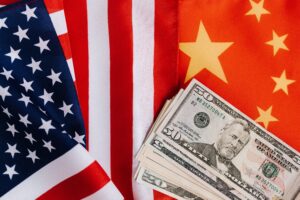Why Valuation Matters
Aggregate equity fund valuation metrics matter; research shows that starting valuations correlate inversely with forward 10 year returns. How starting valuation is measured is relevant; when we run the stats, using a seemingly-superior smoothed measure like CAPE can appear inferior to a more straightforward point-in-time measure like trailing or forward estimated P/E. Either way, the evidence is clear, and it’s intuitive: pay up for any collection of equities, and you’re likely to realize inferior forward returns as valuations inevitably fall back to earth. As a quick example, if a fund is 10% overvalued and expected to revert to its historical mean valuation over the following 10 years, then setting aside earnings growth and shareholder yield as the other two fundamental drivers of return, the fund’s ‘revaluation alpha’ will be an annual negative 96 bps versus an otherwise fairly-valued basket. Clearly this depends on whether the particular smart-beta fund is currently exposed to factors which pick up relatively more or less expensive equities. 1 A momentum fund that was tech-heavily in 2020 and is energy-heavy in 2023 will naturally look inexpensive on a comparative basis. Over multiple market cycles and for funds with sufficiently-long histories, these deviations should roughly even out. For example, in the case of a plain vanilla Value fund, time-varying composition ought to be less of an influence on relative historical valuation. 2 Given the above, one of the most straightforward and irrefutable means to measure relative valuation is to use dividend yield as a proxy. Data series are easy to obtain because cash dividends are definitive and real. One notable downside is the shift in shareholder yield from dividends to tax-preferred share buybacks over time, which means we’re not making an apples-to-apples comparison when we look back over a fund’s full dividend history. A related issue is that dividends tend to be artificially more stable in the baseline (firms are incentivized to maintain stable, growing, and consistent dividends), whereas share buybacks are generally used to return the ‘balance of free cash flow’ and are thus more variable. In spite of these limitations, we find that relative dividend yield is a good starting point for assessing historical valuation, the validity of which improves with fund lifetime. 3Why Risk-adjusted Return Matters
Since Markowitz, Miller, and Sharpe set down the initial foundations of quantitative finance, expected excess return per unit of risk has been accepted as the standard normalized measure of portfolio returns. This makes intuitive sense in the context of economics and behavioral finance. The Sharpe ratio quantifies this relationship with fund return (less the risk-free rate) in the numerator and fund volatility in the denominator. In this hunt for expected reward with the lowest expected downside risk, additional measures like historical maximum-drawdown or the Sortino Ratio help to characterize tail risk, and these are valuable supplemental concepts.4 The Sharpe ratio is the central measure we focus on in this analysis.Marrying Starting Value to Risk-adjusted Return
The interactive graph below (float over fund markers for further statistics), plots Relative Valuation versus expected Relative Sharpe. We filter for funds with at least 10 years of history, Expected Relative Sharpe in excess of 1.0 (implying expected ex-ante performance superior to the market based on historical factor capture and alpha), and Historical Relative Valuation less than 100%. The x-axis is inverted with 100 representing fully-valued and funds with increasingly-positive expected re-valuation alpha plotted further towards the right. Momentum dominant funds that have recently rotated from tech stocks to energy are highlighted in red; Momentum naturally varies significantly as sector momentum rotates; Historical Relative Valuation therefore has diminished meaning. In floating over the various fund datapoints, you’ll note that the Realized Relative Sharpe (actual lifetime fund performance) is generally lower than Expected Relative Sharpe. Much of this is due to the recent underperformance of Value. The standout here is SCHD, the Schwab U.S. Dividend Equity ETF; it has outperformed the market over the past 10 years, is multi-billions in assets with high volumes and low spreads, has both Quality and Value exposure, a completely transparent implementation, and bears a single digit fee. Given the underperformance of Value over this period, this is an impressive outcome.Data Sources
Historical factor return data from Kenneth French’ website through February 2023.
Publicly-available historical price and dividend data.
- Whether or not the current factors are relatively 'cheap' or 'expensive', compared to history; Value, for example, is historically-cheap (even on an absolute basis), whereas Quality is relatively expensive.
- By definition, long-only Value explicitly picks up the least expensive cohort of equities, which ought to be either relatively over-valued or under-valued on a historical basis; when Value is expensive, it's expensive, period
- There are a few approaches to deriving historical relative dividend valuation. One is to divide the historical median dividend yield by the trailing 12-month dividend yield. Another is to take the annualized difference between total return and price return to calculate the historical geometric mean yield. We use the former method, here. As an example, if the historical median dividend yield is 2%, and the current trailing twelve month (TTM) dividend yield is 1.82%, implied over-valuation is 10%. We can infer 96bps annualized underperformance (negative re-valuation alpha) over 10Y on a simple mean-reversion basis.
- The most obvious third dimension of relevance is low or negative correlation with the market portfolio as a measure of diversification power. Our DFSVX versus IJS article touched on the diversification benefits of factors themselves (and assuming that long-only funds have a rough market beta of 1.0, this is the only relevant dimension of diversification available the context of smart beta within a given universe such as US equities).







